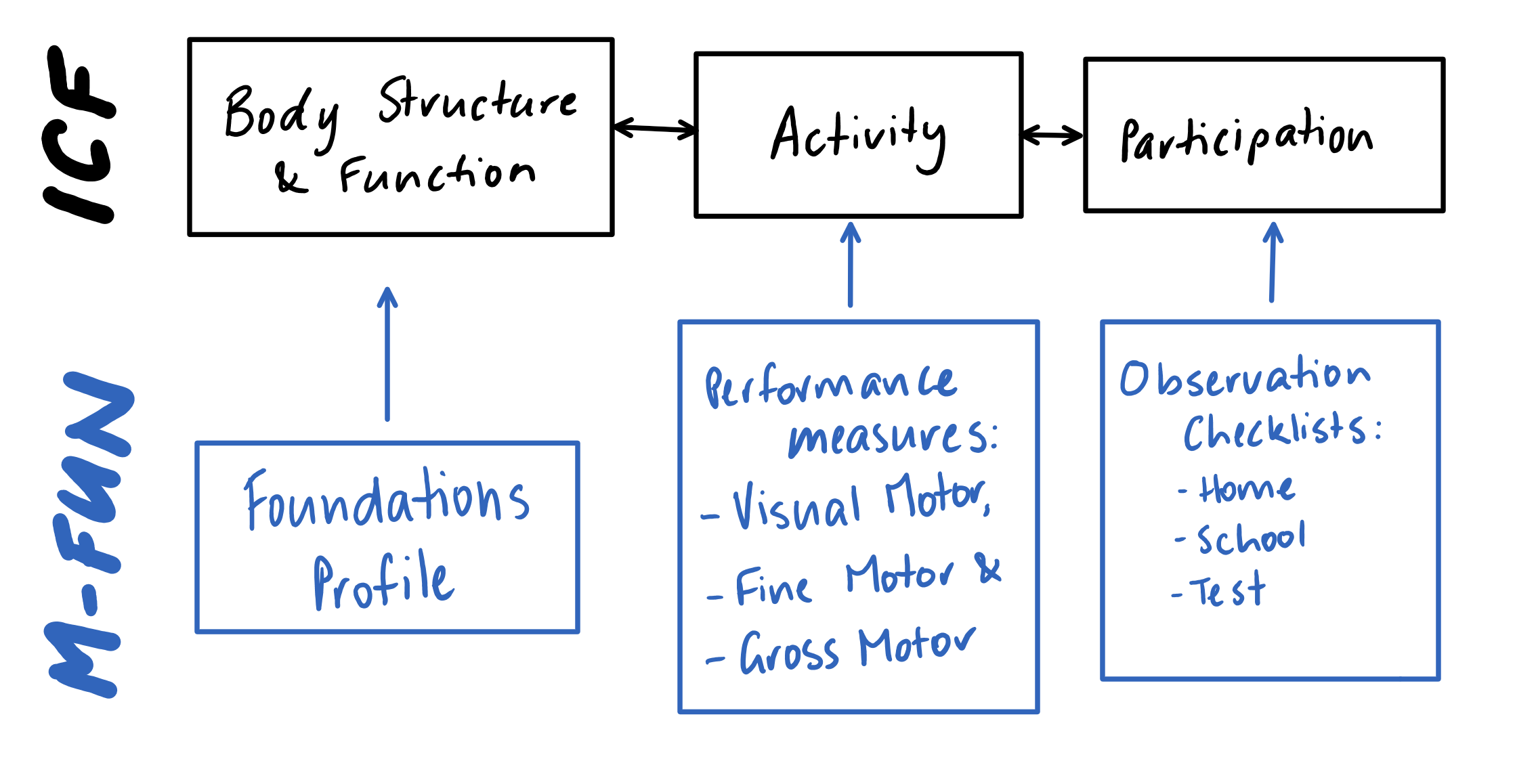eLearning: Administration & Scoring of the M-FUN
The most important thing I learnt from the SPD University Miller Function and Participation Scales webinars is that this assessment relies on the therapist’s clinical judgement in the administration and scoring. Dr Lucy J Miller and Dr Sarah Schoen, who ran the e-learning courses made it clear that the assessment is supposed to be fun, and the goal is to get the child’s best performance. And they mean it.
When I first started administrating the M-FUN, I was overly precise to avoid jeopardising the validity of the standardised results. I’ve learnt now that the test was standardised in a way that means you can change things to suit the child without breaching standard administration. For example, if a child is fatiguing significantly, you can split the assessment into several sessions. You can change the order of the items so snack time comes earlier if the child needs a break. Wow - it's such a relief to have this flexibility within a standardised assessment.
The webinars included video examples. I found it useful to see other therapists administering the assessment, though the videos were focused on the children rather than the therapist.
I learnt that the M-FUN is designed to follow the ICF framework by measuring Body Structure and Function (through the Foundations Profile), Activity (VM / FM / GM Performance measures) and Participation (Observations Checklists).

Here is what I learnt to help combat the difficulties I was initially having
with the M-FUN:
Issue 1: While theoretically, this assessment can be done in a variety of settings (clinic, home, school, etc.), this isn't always easy. I have found the gross motor section difficult, as it requires prior set-up of measured lines and markers, and it requires a smooth wall with a concrete floor against which a ball can be kicked for "Soccer". I've been unable to locate an appropriate wall at several locations (homes and schools).
It looks like I’m not the only person with this issue. In the clinic-based assessment sessions shown in the webinars, the therapists were using a long hallway for the soccer section. To me, it didn’t look like 12 feet away – but if that’s acceptable, it makes my life easier.
Issue 2: If one item in a performance domain can't be completed, a standard score for the domain cannot be calculated. Therefore, if the only suitable wall becomes unavailable (e.g. it starts raining) for the Soccer game, a standardised GM score can't be obtained even for the upper body items, and the time you've spent on the rest of the GM section becomes much less useful.
There are a couple of options to combat this:
- Come back and do it again another day
- Use your observations to comment on the parts the child completed. It’s not all about the scores.
Issue 3: To administer this assessment, you have to be very organised. There are many different resources to juggle, and the examiner's attention is constantly split between observing the child, checking the administration directions, scoring, and keeping time.
I feel much less stressed about this now. When doing the assessment, it is assumed that you will know it well enough not to need the administration directions in front of you – there are hints on the score sheet, and the wording doesn’t have to be used word for word, it’s just to give you the gist. Lucy and Sarah also commented several times on how useful videoing sessions can be so you can complete scoring afterwards.

Issue 4: Because the children enjoy the assessment items, they want to finish their work. I like children to finish their work too, but the time limits are very short for the children I work with, and it's very difficult to stop them half way through every single item! It's not great for rapport or for their sense of accomplishment.
To combat this, I have been allowing the children to finish their work (in most cases) and trying to note when the time ran out. As it turns out, this is what we’re expected to do. You want the children to feel good about their efforts and continue to do their best.
Issue 5: I've found it takes more preparation time than other assessments, and it takes longer to score, compared to something simpler like the DTVP-3.
This is still true. I don’t think there’s really a way around it, due to the M-FUN's comprehensive nature.
Issue 6: It's American. For example, one of the Classroom Observations Checklist items is about whether the child can carry their tray in the cafeteria. This isn't relevant in most Australian schools. I've modified this item to be "manages lunch box independently."
Once again, that’s probably not going to change anytime soon. However, with the guiding principals of the assessment in mind, such as basing on the ICF framework, and focusing on measuring the child's best performance, I feel more justified in modifying a few items to be more culturally or environmentally relevant.
Overall, I found the webinars very helpful. I would recommend them as essential viewing for anyone administering the M-FUN. You can find them here.
My original review of the M-FUN assessment is here.
These are my thoughts. Please share yours below.